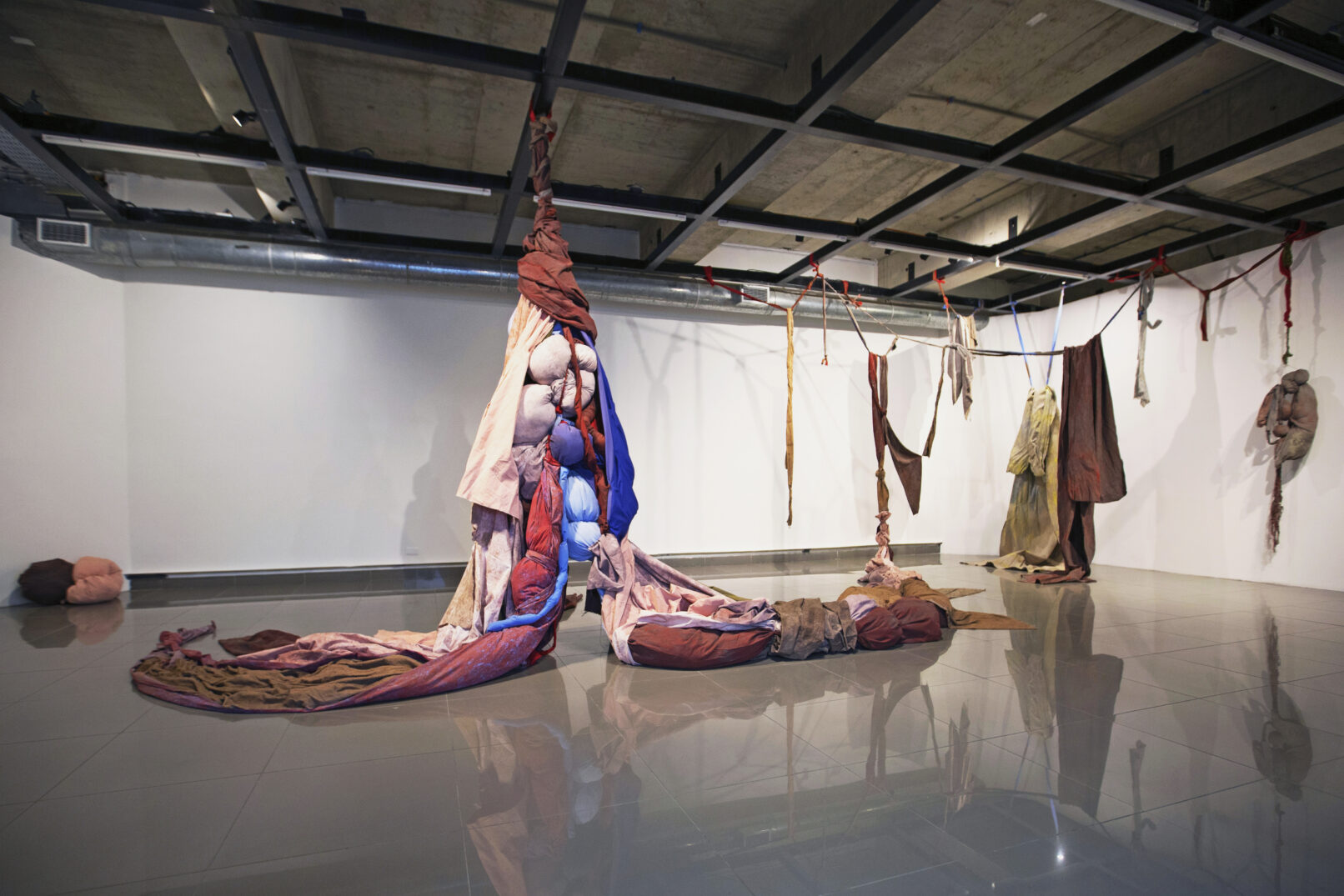BODYLAND
“Bodyland, through its abstract meaning, its earthy colors, its openness to interpretation, allows the viewer to connect with what they want, to revive or bury what they need. To make people uncomfortable, to make present that realities are not erased or stored in memory, They are there, like those pieces of recycled fabrics, tied and tied that resemble tortured and silenced human forms.”
Emilia Lagos
“A territory that has experienced a totalitarian dictatorship – and the Chilean viewer
undoubtedly knows this very well – produces an extremely rich memory of human evil.(…)
After the accession of the Eastern European countries to the European Union in 2004, we thought that the traces of the old regimes, both fascist and communist, would gradually and permanently disappear, however the current reality shows the opposite.(…)
The archetypal sculptural forms of the 20th century passed, at the hands of the experimental avant-garde artists of the interwar period, to the informal, to minimalism or to poor art. As our memory of World War II faded, so did the references to archetypes, let’s say, from the essential to the aesthetic. The increasing ephemerality of the reality we live in, however, returns precisely this singularity to the scene in universal and surprisingly reassuring ways.(…)
Walking through Balázs’ installation, on the other hand, is more natural, open to other (all) possibilities, allowing free trajectories and events, without discipline, without the need to look at a map.
Richard Gregor
As the first Hungarian invited artist of the SACO Biennale, I was bound by an undeniably valid topic: oppression by power, the exposure of the individual and how to survive under extreme and inhuman circumstances. During my participation in the biennale, I was concerned with the construction of an installation that could embody the will, the thrive and hope to continue and rebuild our lives for a better future.
With The help of the team of the biennale I collected sand from the Atacama desert, from which we made paint, shaped recycled textiles and built the main body of the installation. Despite the harsh shaping and techniques, distortions and interventions, it became the embodiment of survival and growth.
The visceral structure of my installation allows an open insight into its unshrouded structure, offering some kind of acceptance by facing the truth.
The installation was built in Chile, by the author herself along with an assistant. The fabrics and paints used are all recycled from Antofagasta city and Atacama Desert.
The installation was exhibited in the gallery space of Fundación Minera Escondida Antofagasta as the opening exhibition of Saco Biennale Chile, 2023.
Nikolett Balázs
